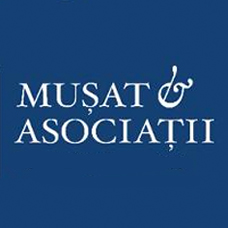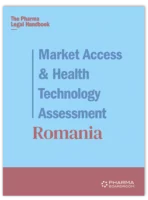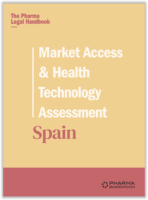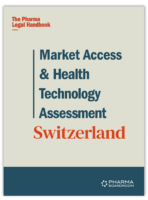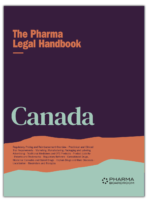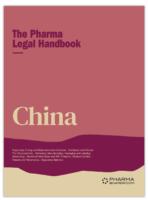Orphan Drugs
Mușat & Asociații / Romania
Join industry executives in staying informed on the market access and HTA process in Romania.
1. What is the definition of an orphan drug in your country?
The Romanian legislation defines “orphan drug” by referring to the criteria provided for by Regulation (EC) no. 141/2000 on orphan medicinal products (“Regulation no. 141/2000”), which is directly applicable in Romania.
According to Regulation no. 141/2000, a medicinal product could be designated by the European Medicines Agency as an orphan medicine when:
- it is intended for the diagnosis, prevention or treatment of a life-threatening or chronically debilitating condition affecting not more than 5 in 10,000 persons in the Community when the application is made; or
- it is intended for the diagnosis, prevention or treatment of a life-threatening, seriously debilitating or serious and chronic condition in the Community and that without incentives it is unlikely that the marketing of the medicinal product in the Community would generate sufficient return to justify the necessary investment; and
- there is no satisfactory method of diagnosis, prevention or treatment of the condition in question that has been authorised in the Community or, if such method exists, that the medicinal product will be of significant benefit to those affected by that condition.
2. Describe the pricing process of orphan drugs in your country.
At the local level, NAMMD is the competent authority which performs the classification of the medicinal products, including for the ones which fall in the category of orphan medicines. According to the Romanian Pricing Norms, as a rule, the orphan medicinal products are considered innovative medicines and the same pricing rules shall apply.
The competent authority which approves the prices of prescription-only (Rx) medicines, including orphan medicines, is the Ministry of Health.
By law, the manufacturer price for Romania should be lower than or (at most) equal to the lowest price of the same medicinal product in 12 (twelve) comparison countries (Czech Republic, Bulgaria, Hungary, Poland, Slovakia, Austria, Belgium, Italy, Lithuania, Spain, Greece and Germany).
Hence, the price of orphan medicinal products should be proposed by the marketing authorisation holder or its representative, by comparison with the prices of such medicinal products in the 12 reference countries.
The price should be approved by the Ministry of Health within 90 days as of receiving the price application dossier and is valid for 1 (one) year.
Further to the approval of the manufacturer price, the maximum wholesale and retail prices are calculated by the Ministry of Health according to a special formula, by considering the maximum applicable wholesale and pharmacy margins set forth by the applicable regulations; the approved prices are published in the national price catalogues.
Every year, the marketing authorisation holders and/or their representatives should submit a price correction dossier with the Ministry of Health for updating the price of each medicine placed on the Romanian market; the updated price will be valid also for 1 (one) year.
3. Describe the reimbursement process of orphan medicines in your country.
Orphan medicines could be reimbursed in the Romanian health insurance system pursuant to the same rules applicable to medicinal products in general, if the following conditions are met: (1) they have a valid marketing authorisation; (2) their price for Romania is approved by the Ministry of Health and (3) they are included in the INN Reimbursement List, approved by the Romanian Government based on the health technology assessment (HTA) performed by NAMMD.
The HTA legislation stipulates specific conditions and special evaluation criteria for orphan drugs, which could improve their chances to receive a favourable HTA decision, pursuant to NAMMD’s prioritization criteria of the evaluation for such medicines.
If NAMMD issues a favourable HTA decision, the medicines in question should be included in the INN Reimbursement List. Subsequently, NHIH and/or the Ministry of Health will include the medicine in question in the Trade Names Reimbursement List, a list which mentions the trade names and the reimbursement prices for the medicines reimbursed in the national health insurance system and in the national health programs.
4. Other than the clinical studies required, do the data and studies required for the pricing and reimbursement of orphan drugs differ from that of other drugs?
As a rule, orphan medicines are considered innovative medicines and the appropriate pricing rules shall apply.
The norms on the health technology assessment procedure provide for certain special rules as regards the documentation and the information which should be submitted for the HTA evaluation of orphan medicines, in view of their reimbursement in the national health insurance system and in the national health programs.
Thus, in order to receive a favourable decision for the inclusion of the orphan drug in the INN Reimbursement List, the HTA legislation requires the applicant to submit to NAMMD one of the following documents:
- the clinical trial authorisation and the interim/final report proving that a clinical trial of the medicinal product evaluated for the submitted indication has been conducted on the territory of Romania;
- the EUnetHTA assessment for the submitted indication;
- the authorisation for use in last resort treatments in Romania for the medicinal product evaluated for the submitted indication; and/or as the case may be
- information regarding the donation of the medicine in question for part of the population eligible for treatment.





